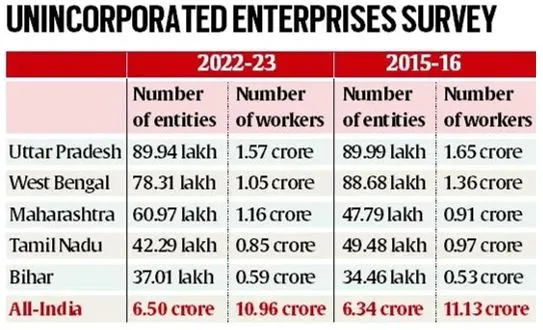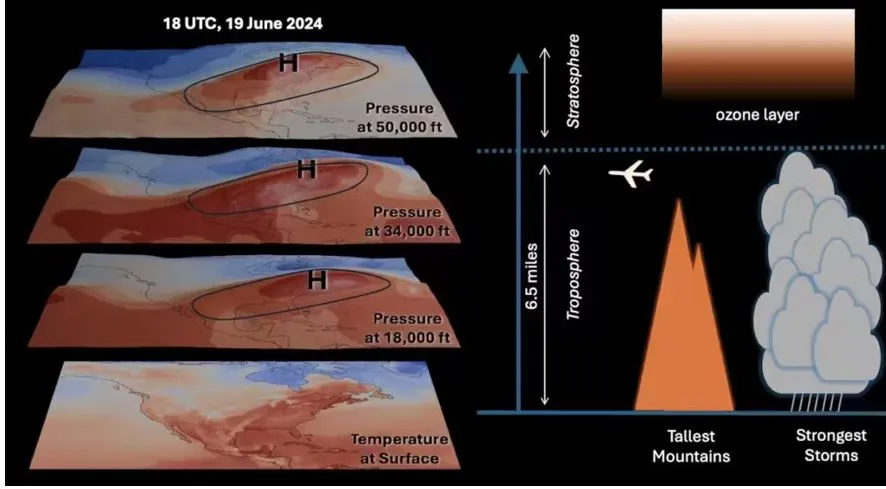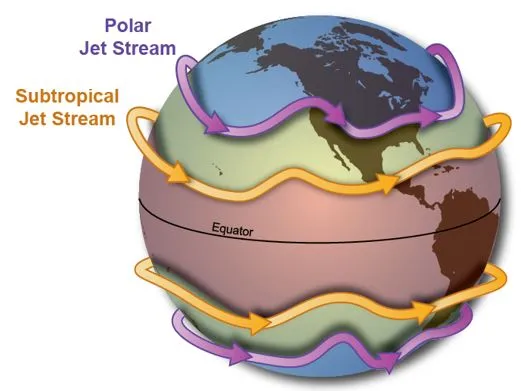

12th July 2024 (9 Topics)
Mains Issues
Context
India’s Prime Minister Narendra Modi's recent visit to Vienna marked the first trip by an Indian Prime Minister to Austria since 1983, when Indira Gandhi visited. This visit came immediately after Modi's meeting with Russian President Vladimir Putin in Moscow, highlighting its strategic timing amidst global geopolitical developments.
Historical Background:
- Vienna's significance dates back to World War II, when it was occupied by Nazi Germany and later divided into sectors by the Allies.
- In 1955, Austria gained independence with the signing of the Austrian State Treaty, committing to neutrality amidst the Cold War tensions between Western Europe and the Soviet bloc.
- India's Role in Austrian Independence: In the 1950s, India, under Prime Minister Jawaharlal Nehru, played a pivotal role in Austria's quest for sovereignty. Nehru's diplomatic efforts helped Austria secure the State Treaty, which ended the Allied occupation and affirmed its status as a neutral nation, akin to Switzerland.
- Evolution of Bilateral Relations: Diplomatic ties between India and Austria were established in 1949.
Modern Partnership and Economic Opportunities:
- Today, Austria and India seek to elevate their partnership with a focus on sustainable economic collaborations.
- Both countries have shown balanced stances on global issues like the Russia-Ukraine conflict, while also exploring new avenues in infrastructure, renewable energy, e-commerce, and technology.


Mains Issues
Context
The latest Annual Survey of Unincorporated Enterprises (ASUSE) for 2021-22 and 2022-23, released by the Ministry of Statistics and Programme Implementation, provides key insights into employment trends in India's informal sector.
Key Findings:
The findings reflect the impact of three major shocks (demonetisation, GST implementation, and the Covid-19 pandemic) on unincorporated enterprises and their workforce.
- Employment Figures:
- The number of workers in the informal sector decreased by 16.45 lakh (1.5%) from 11.13 crore in 2015-16 to 10.96 crore in 2022-23.
- The number of unincorporated enterprises increased by 16.56 lakh, rising from 6.33 crore in 2015-16 to 6.50 crore in 2022-23.
- Impact of Shocks:
- The informal sector bore the brunt of demonetisation, GST compliance, and the Covid-19 lockdown, which disrupted economic activities and affected employment stability.
- Maharashtra, Bihar, Gujarat, Madhya Pradesh, and Odisha witnessed an increase in informal sector employment, while Uttar Pradesh, West Bengal, Tamil Nadu, Karnataka, and Andhra Pradesh recorded a decline.
- State-wise Trends:
- Maharashtra saw a consistent rise in informal sector workers, reaching 1.15 crore in 2022-23 from 91.23 lakh in 2015-16.
- Bihar experienced a decline in informal sector workers till 2021-22 but saw a sharp increase to 58.95 lakh in 2022-23, surpassing pre-pandemic levels.
- Economic Indicators:
- The real Gross Value Added (GVA) of unincorporated sector enterprises grew by 6.9% in 2022-23, yet remained 1.6% lower than the 2015-16 levels.
- The sector's compounded annual growth rate (CAGR) contracted by 0.2% between 2015-16 and 2022-23, reflecting the prolonged impact of economic shocks.
- Sectoral Contribution:
- The unorganised sector contributes over 44% to India's Gross Value Added (GVA) and employs nearly 75% of the non-agricultural workforce, highlighting its pivotal role in the economy.

Why the unorganized sector is struggling?
- Cost Burden: The unorganized sector struggles with any changes that increase its costs. Unlike the organized sector, which is largely digitized and formalized, the unorganized sector finds it difficult to adapt.
- Shift in Demand: Demand has shifted from smaller unorganized units to larger organized ones, leading to the rapid growth of organized sector enterprises.
- Market Capture: Despite the intent of GST to formalize the economy, the organized sector often dominates markets that were traditionally held by the unorganized sector.
- Unpreparedness: GST, digitization, and formalization policies disproportionately benefit the organized sector, disadvantaging the unorganized sector.
- Market Capture: As production in the unorganized sector declines, the organized sector expands into new markets, further marginalizing the unorganized sector.
Why unorganised sector matters?
- Dominant Workforce: The sector accounts for approximately 90% of India's workforce.
- Employment Generation: It provides income-earning opportunities to a large number of people who might otherwise struggle to find formal employment.
- Driving Growth: It plays a leading role in India's electric vehicle (EV) growth, particularly through sectors like e-rickshaws.
- Economic Contribution: It plays crucial role in the economy by contributing to:
- National Domestic Product (GDP): Contributes through its output and economic activity.
- Savings: Helps in household savings which contribute to national savings.
- Capital Formation: Supports investment and economic growth by contributing to capital formation.
Government measures to protect interests of unorganised labour
- Life and Disability Cover: Provided through Pradhan Mantri Jeevan Jyoti Bima Yojana (PMJJBY) and Pradhan Mantri Suraksha Bima Yojana (PMSBY).
- Health and Maternity Benefits: Insured under Ayushman Bharat-Pradhan Mantri Jan Arogya Yojana (AB-PMJAY), targeting those in deprived occupations.
- Old Age Protection: Pradhan Mantri Shram Yogi Maan-dhan Yojana (PM-SYM) launched in 2019. It offers a monthly pension of Rs. 3,000 upon reaching 60 years for unorganized sector workers.
- Other Welfare Schemes:
- Public Distribution System, enhanced through One Nation One Ration Card scheme under National Food Security Act.
- Mahatma Gandhi National Rural Employment Guarantee Act (MGNREGA) for rural employment.
- Deen Dayal Upadhyay Gramin Kaushal Yojana for rural skill development.
- Pradhan Mantri Awas Yojana for affordable housing.
- Pradhan Mantri Gareeb Kalyan Rojgar Yojana for employment generation in rural areas.
- Mahatma Gandhi Bunkar Bima Yojana for weavers.
- Deen Dayal Antyodaya Yojana for urban and rural poor.
- PM Street Vendor's AtmaNirbhar Nidhi (PMSVANidhi) for street vendors.
Fact Box:About Annual Survey of Unincorporated Enterprises (ASUSE)
Gross Value Added (GVA)
|


Mains Issues
Context
Recent discussions have focused on reforms in India's fertiliser sector, which plays a critical role in agriculture. The government is considering changes to how fertilisers are priced and regulated to improve efficiency and accessibility for farmers.
Current Situation:
- Price Control and Subsidy: Currently, the government regulates the prices of some fertilisers like urea to ensure affordability for farmers. Other fertilisers under the Nutrient-Based Subsidy (NBS) scheme have their prices set by companies but receive subsidies based on their nutrient content.
- Recent Changes: Starting April 2023, the government has imposed informal price controls on NBS fertilisers by setting maximum profit margins. Fertiliser companies cannot receive subsidies if they charge prices exceeding these margins.
- Impact on Farmers: This move aims to stabilize fertiliser prices and ensure they remain reasonable for farmers.
- For instance, the maximum retail prices (MRPs) for popular fertilisers like DAP and MOP have been set to Rs 27,000 and Rs 30,000-31,000 per tonne, respectively.
Why fertilizer is ‘crucial’ for Indian economy?
- Food Security: India's ability to feed its large population depends heavily on the availability and efficient use of fertilisers to boost crop yields.
- Global Standing in Agriculture: As the world's second-largest producer of fruits and vegetables after China, India's agricultural success relies on effective fertiliser usage.
Current Challenges:
- Pricing Issues: There are disparities in how fertilisers are priced and subsidised. Farmers pay less than 20% of urea's production cost due to heavy subsidies, leading to overuse of nitrogen compared to other essential nutrients like phosphate, potash, sulphur, and micro-nutrients.
- Production Gap: Despite increasing domestic production capacity to 31 million tonnes, there remains a shortfall of approximately 4 million tonnes annually to meet national demand.
- Import: India currently imports a significant amount fertilizers, including urea. However, the country has decided to end urea import by 2025.
- Climate Change: Global climate change poses a significant threat to food and nutritional security worldwide, affecting agricultural productivity.
- Environmental Impact: Fertiliser production is energy-intensive and heavily reliant on fossil fuels, contributing to environmental concerns.
Fact Box:About Fertilisers
Fertilizer Consumption
What is Nutrient-Based Subsidy (NBS) scheme?
|


Prelims Articles
Context
In June 2024, the Northeastern United States experienced an unusually early and prolonged heat wave caused by a weather phenomenon known as a heat dome. This heat dome, linked to a stagnant high-pressure system in the atmosphere, trapped warm air beneath it, preventing weather systems from moving through and resulting in extreme heat conditions.
What is a Heat Dome?
- A heat dome forms when warm air becomes trapped under a stationary high-pressure area in the atmosphere.
- This phenomenon blocks the movement of weather patterns, allowing more sunlight to reach the Earth's surface.
- Consequently, this intensifies warming and drying of the soil, reduces evaporation, and inhibits the formation of rain clouds.
- The longer a heat dome persists in one location, the hotter conditions become each passing day.
- Heat domes typically last from several days to a few weeks and are influenced by the behavior of the jet stream.

Fact Box: Jet Stream
|


Prelims Articles
Context
In order to centralize and streamline the bill payment process across India, the Reserve Bank of India (RBI) has mandated that all banks process credit card bill payments through the Bharat Bill Payment System (BBPS).
What is Bharat Bill Payment System?
- Developed by: National Payments Corporation of India (NPCI)
- The Bharat Bill Payment System (BBPS) is a unified platform to streamline and centralize the process of paying bills across India.
- BBPS facilitates bill payments through a wide network that includes bank branches, online portals, mobile apps, and other digital channels.
- This system is designed to make bill payments convenient and efficient for both businesses and customers by offering various payment methods and ensuring prompt settlements.
- Significance:
- Unified Platform for All Payments
- Convenient and User-Friendly
- Timely Reminders
- Enhanced Security
- Multiple Payment Modes
Fact Box: National Payments Corporation of India (NPCI)
|


Prelims Articles
Context
Recently, many saline lakes have been shrinking and experiencing declining water quality. This trend is exacerbated by human activities such as pollution, water diversions, and climate change impacts like reduced precipitation and increased temperatures.
What are Saline Lakes?
- Saline lakes make up 44% of all lakes around the world.
- They differ from freshwater lakes because they lack a consistent outlet for water, causing dissolved salts to accumulate from inflows.
- Their water levels fluctuate naturally and are sensitive to disturbances, whether natural or human-induced.
- Changes in Saline Lakes (Examples)
- Lake Urmia, Iran: Once one of the largest saline lakes, Lake Urmia has drastically shrunk due to unsustainable human practices. This has led to environmental problems, reduced tourism, agricultural challenges, and biodiversity loss.
- Aral Sea: Once the fourth-largest inland water body, the Aral Sea has significantly diminished due to poorly planned irrigation projects. Efforts to restore it have faced immense challenges with lasting environmental and socio-economic consequences.
Fact Box: Saline Lakes in India
|
PYQQ. With reference to India, Didwana Kuchaman, Sargol and Khatu are the names of- (2021)
Solution: (d) |


Editorials
Context
The upcoming Third Plenum of China's 20th Party Congress, scheduled for July 15-18, 2024, has sparked global interest due to its potential to signify a shift in China's economic and foreign policies.
Significance of the Third Plenum:
- Historical Importance: Third Plenums typically set China's economic strategy for the next 5-10 years, with the 1978 Plenum under Deng Xiaoping being a landmark event for economic reforms.
- Economic Challenges: China faces issues such as an aging population, shrinking workforce, high debt levels, and economic slowdown, necessitating potential reforms.
- Global Expectations: There is speculation about possible sweeping reforms to ensure China's rapid progress, though uncertainty remains about the current leadership's willingness to experiment with new ideas.
China's Current Stance and Global Perceptions:
- Continued Assertiveness: Western commentators expect China to maintain its "gray zone coercion" tactics, including disinformation campaigns, military provocations, and threats to Taiwan.
- Global Initiatives: China's Global Development Initiative (GDI), Global Security Initiative (GSI), and Global Civilization Initiative (GCI) reflect its values and national security priorities.
- Regional Concerns: Countries in Asia may need to contend with a mix of Chinese cultural expansionism and national security paranoia.
India-China Relations and Future Prospects:
- Strained Ties: India-China relations have been under strain since 2020, primarily due to border tensions.
- Strategic Concerns: India's strategic community highlights concerns about China's growing missile and nuclear inventory, space capabilities, and electronic warfare advancements.
- Diplomatic Opportunity: The article suggests that India, given its current strong position, could take a diplomatic initiative to improve relations with China, potentially benefiting both countries and global peace.
UPSC Mains Questions:
Q. Evaluate the challenges and opportunities in India-China relations in light of recent geopolitical developments. What role can diplomacy play in managing bilateral tensions?


Editorials
Context
World Population Day (July 11) highlights the need to address male infertility, a stigmatized and often neglected aspect of reproductive health in India.
Prevalence and Causes of Male Infertility:
- Global Scale: WHO estimates 60-80 million couples worldwide struggle with infertility.
- Indian Scenario: Approximately 13-19 million Indian couples may face infertility issues, with male infertility accounting for 50% of all cases.
- Causal Factors: Stress, hormonal imbalance, genetic and epigenetic factors, environmental pollution, lifestyle choices, and delayed marriages contribute to male infertility.
Addressing Male Reproductive Health:
- Awareness and Education: Emphasize the importance of reproductive health education, particularly during secondary school and junior college years.
- Lifestyle Interventions: Promote healthy eating, regular sleep patterns, stress reduction through exercise and meditation, and avoidance of alcohol and tobacco.
- Medical Treatments: Options include surgery for physical issues, assisted reproductive technologies like IUI, IVF, and ICSI, and genetic counseling for gene mutation cases.
Challenges and Way Forward:
- Stigma and Silence: Male infertility remains a taboo subject, impeding progress and affecting those struggling with the issue.
- Increasing Prevalence: Environmental pollution and lifestyle shifts are expected to increase infertility rates.
- Holistic Approach: Combine lifestyle interventions, medical treatments, and public awareness to address male reproductive health comprehensively.
UPSC Mains Questions:
Q. Discuss the socio-economic implications of rising male infertility in India. What policy measures can be implemented to address this issue effectively?


Editorials
Context
The Supreme Court of India has clarified that divorced Muslim women can seek maintenance under the secular Code of Criminal Procedure (CrPC), in addition to the provisions of the Muslim Women (Protection of Rights on Divorce) Act, 1986.
Historical Background and Legal Developments:
- Shah Bano Case (1985): Allowed divorced Muslim women to seek maintenance under Section 125 of CrPC.
- Muslim Women Act (1986): Enacted to nullify the Shah Bano judgment, seemingly restricting Muslim women's maintenance rights to personal law.
- Constitution Bench Ruling (2001): Upheld the 1986 Act but interpreted it to not foreclose secular remedies for Muslim women.
Supreme Court's Recent Verdict:
- Parallel Existence: Both personal law provisions and secular remedies for maintenance can coexist in their distinct domains.
- Expanded Rights: The 1986 Act codifies Muslim women's rights in addition to, not in derogation of, their right to seek maintenance under secular law.
- Social Purpose: Justice Nagarathna highlighted that CrPC's maintenance provision aims to prevent vagrancy among women by compelling husbands to support their wives.
Implications and Significance:
- Clarification of Legal Position: Settles conflicting High Court judgments on whether Muslim women should use Section 3 of the 1986 Act or Section 125 of CrPC.
- Expansion of Rights: Uses harmonious interpretation to broaden the scope of rights available to Muslim women.
- Secularization of Remedies: Neutralizes the perception that Muslim women's right to seek maintenance under secular provisions was extinguished in 1986.
UPSC Mains Questions:
Q. Discuss the evolution of maintenance laws for Muslim women in India, highlighting key judicial pronouncements and legislative interventions. How does the recent Supreme Court verdict impact this legal landscape?






